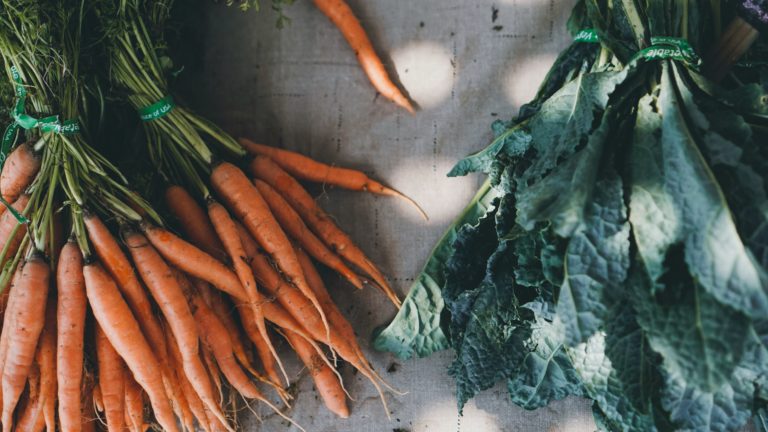
When it comes to the U.S. food system, healthful options have become a luxury that millions of Americans don’t have access to or cannot afford. This food insecurity disproportionately affects BIPOC communities due to long-standing structural racism, discriminatory policies, income disparities, and limited economic opportunities.
The levels in which our food system needs to be redesigned to create an equitable food system are in agriculture at the food production level and community level through development and access programs. Eat REAL is using school meals as a platform to create healthful food equity. Other nonprofits, businesses, government departments, and passionate individuals are coming together to make our food system more just by focusing on these structural levels in the larger food justice movement.
Inequality in Agriculture
The agriculture and food system in this country is rooted in racial inequality. Anglo-Americans forcefully stole land from indigenous communities and then used enslaved people to tend to and grow the land. Since emancipation, discriminatory policies have made it difficult for Black, indigenous, and people of color (BIPOC) to access land ownership and capital.
Racism and inequality in the food production system are still rampant today. The United States Department of Agriculture (USDA) most recent Census of Agriculture found that only 1.6% of agriculture producers (i.e., farm owners) are Black, 3% are Latinx, and a whopping 95.4% are white. Black farmers, on average, make less than $40,000 annually compared to over $190,000 for white farmers. Today, a large percentage of American farmland is worked by underpaid Latinx farmworkers, and pesticide-laden agriculture fields are located disproportionately next to communities of color.
America’s “Food Apartheid”
Beyond the intrinsically racist food production system, our country is facing enormous inequalities in real food access. You may have heard of the term “Food Desert” or “Food Swamp,” describing the many communities across the country that have a high-density of stores selling high-calorie processed food compared to healthier options. It is no coincidence that these areas are disproportionately found in BIPOC communities.
A more appropriate term for the lack of real food access is “Food Apartheid” – the system has been structurally created to intentionally affect BIPOC communities at a disproportionate rate. Municipal zoning policies allow processed food retailers and fast-food restaurants to accumulate in specific neighborhoods. Supermarkets often “redline” these same communities, refusing to develop and open stores because of racist stereotypes about spending habits. A study conducted for CNN found that nearly 20% of predominately black neighborhoods had limited access to supermarkets, compared to 7.6% of mostly white neighborhoods. These racial disparities were seen across income lines. On top of the lack of access, BIPOC communities have long struggled to gain equal economic opportunity due to structural racism.
America’s food apartheid has left communities of color more susceptible to developing processed food-related diseases like type 2 diabetes, hypertension, heart disease, obesity, and cancer. This has been especially dangerous during the COVID-19 pandemic since these comorbidities – caused by food insecurity – have led to higher rates of COVID complications. How are you supposed to “choose” healthy options if there aren’t any at the store you have access to? The health consequences of food insecurity are not about personal choices. We need structural change – like adding more grocery stores with delicious and healthy options – to protect the health of communities of color.
Food Justice Movement
The food justice movement fights to dismantle the structural racism in our food system so that people of color have equal access to healthful, real foods – and the good news is that the movement is growing. Today, food justice efforts, led by community members across the nation, include neighborhood kitchens, urban agriculture, efforts to bring healthy grocery stores to BIPOC communities, government-sponsored nutrition incentive programs, increasing funding to farmers of color, and increasing access to nutritious school meals.
School meal programs are rooted in racial justice work. In 1969, before the government established a school breakfast program, the Black Panther Party started a free school breakfast program in cities across the country. The Black Panthers’ Free Breakfast for School Children Program fed tens of thousands of hungry kids from 1969 through the early 1970s. Unfortunately, it became the target of government propaganda meant to discredit the Black Panthers, and the program sites were destroyed. However, their Free Breakfast for School Children Program had become such a success that it served as the foundation for the National School Breakfast Program formally established by the government in 1975, now feeding 14.5 million children every day before school.
How Eat REAL Fights For Food Justice
Eat REAL’s mission is to provide real food access to children who need it most. Kids need nutritious food to facilitate learning and the path to empowerment and financial success. Food insecurity is a structural problem, so Eat REAL works to transform the food system through schools. We work with schools with high percentages of free and reduced meal recipients to transform their foodservice programs so that meals are both nutritious and sustainable.
Eat REAL has doubled-down on our efforts during the COVID pandemic. We have provided school foodservice workers with PPE so they can continue to safely deliver school meals and facilitated real food donations to support school food service programs in their efforts to provide family meal boxes in addition to students’ school meals.
Together, we can work to end food apartheid and food system injustice in America.
Share this post
Share on facebook
Share on google
Share on twitter
Share on linkedin
Share on pinterest
Share on print
Share on email
